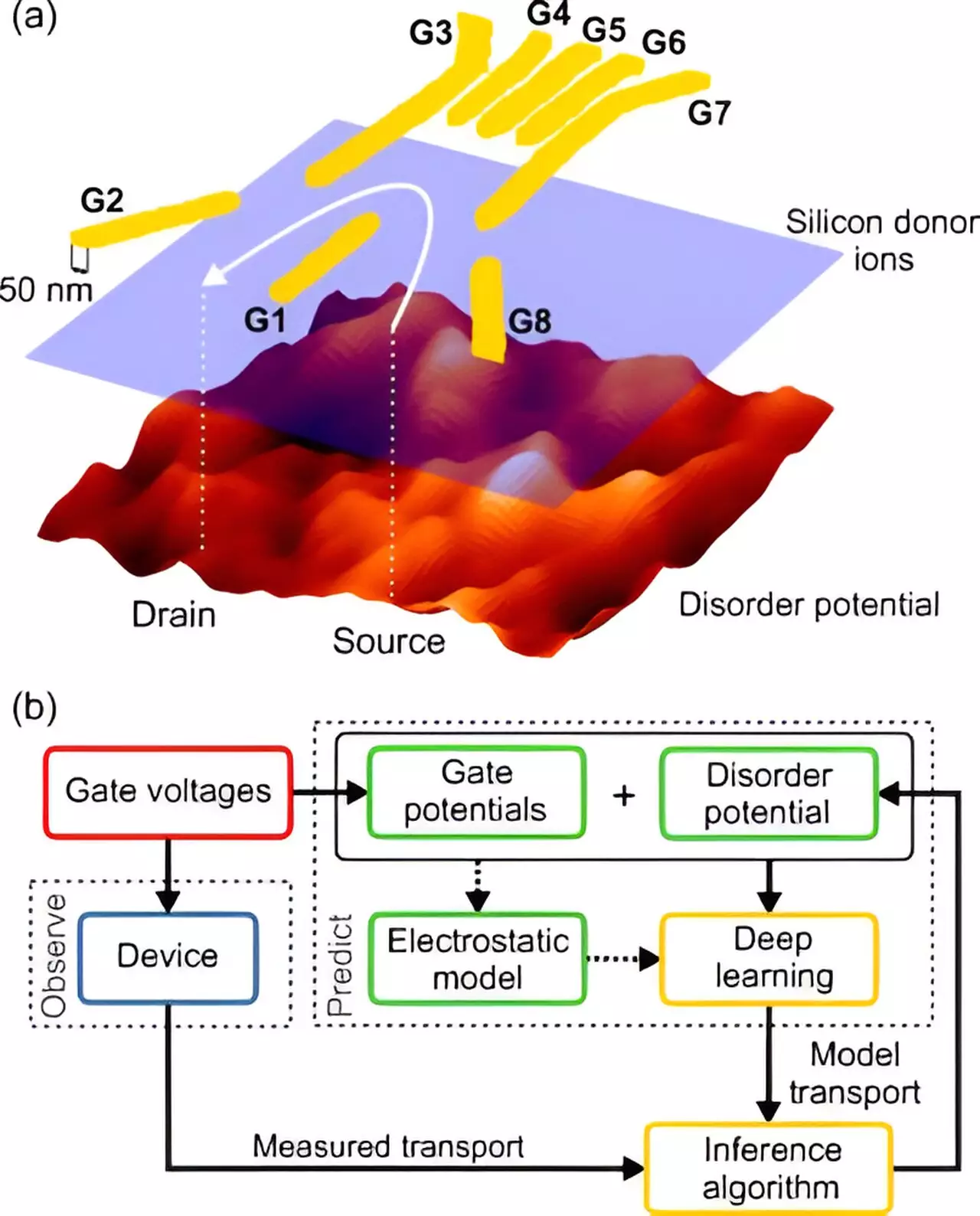Quantum computing has the potential to revolutionize various fields such as climate modeling, financial forecasting, drug discovery, and artificial intelligence. However, one of the major challenges in harnessing the power of quantum devices is the variability in their behavior. Even seemingly identical quantum devices, known as qubits, exhibit different behaviors due to nanoscale imperfections in the materials from which they are made. This variability creates a gap between the predicted and observed outcomes. In a breakthrough study led by the University of Oxford, researchers have utilized machine learning to close this “reality gap” and provide a novel approach to quantify and mitigate device variability.
The research group at the University of Oxford employed a “physics-informed” machine learning approach to indirectly infer the characteristics of internal disorder in quantum devices. By examining how this disorder affects the flow of electrons through the device, the researchers were able to develop a model that could accurately predict the behavior of the device. The approach combined mathematical and statistical methods with deep learning techniques.
To measure the impact of internal disorder on device behavior, the researchers recorded the output current across an individual quantum dot device at different voltage settings. This data was then fed into a simulation that calculated the difference between the measured current and the theoretical current in the absence of internal disorder. By measuring the current at various voltage settings, the simulation was able to identify an arrangement of internal disorder that could explain the observed measurements.
Lead researcher Associate Professor Natalia Ares provided an analogy to explain the research findings. She likened the process to playing “crazy golf,” where the behavior of a ball may deviate from predictions as it enters and exits a tunnel. However, with more shots, a crazy golf simulator, and the application of machine learning, the researchers were able to improve their predictions and narrow the gap between expected and observed outcomes.
The new model developed by the research team not only identified internal disorder profiles that accurately described the measured current values but also predicted voltage settings required for specific device operating regimes. This breakthrough provides a method to quantify the inherent variability between quantum devices, enabling more accurate predictions of their performance. Additionally, the findings can help in engineering optimal materials for quantum devices and inform compensation approaches to mitigate the effects of material imperfections.
The study led by the University of Oxford has made significant strides in bridging the gap between predicted and observed behavior in quantum devices through the utilization of machine learning. By indirectly inferring the characteristics of internal disorder, researchers were able to develop a model that accurately predicted device behavior and voltage settings. This breakthrough has the potential to enhance the scalability and combination of individual quantum devices, bringing us closer to realizing the transformative power of quantum computing in various realms of scientific and technological advancement.



Leave a Reply